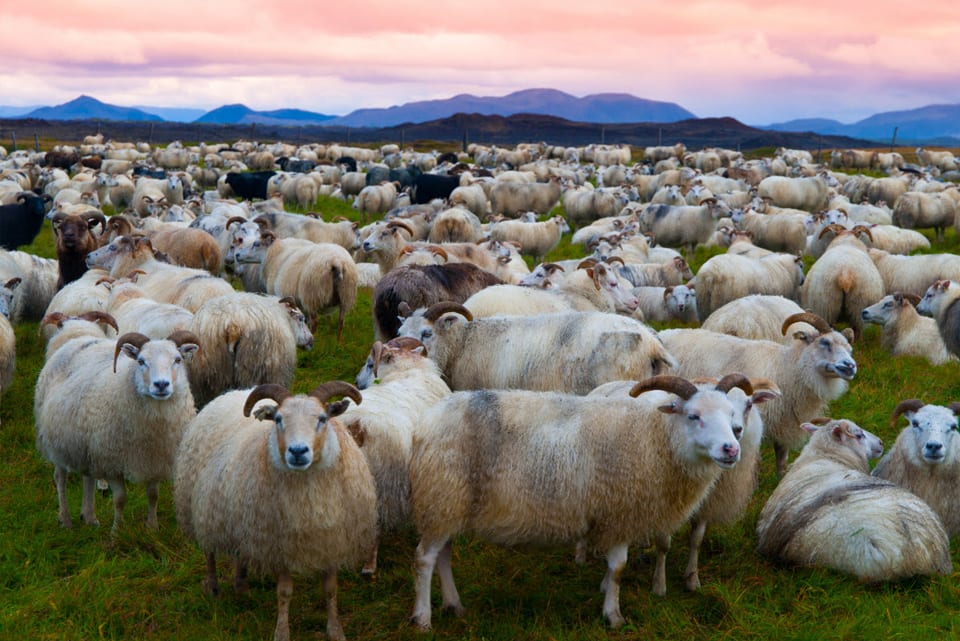
One of our all time favourites is the beautiful Icelandic and we have plenty of reasons, perhaps it is their strong spirit and ability to live in such a harsh environment, their sumptuously soft wool or the commitment to their favourite sport, extreme road crossing…
Sheep in Iceland are hardy and strong, mainly due to adaption to the difficult farming conditions. They have a dual coated fleece with consists of internal and external threads, the long Icelandic coat is named as tog and the fine internal coat as thel, the fibres can be separated and used for difficult woollen products. The tog is exceptionally long, shiny, hardy and waterproof and the thel is delicate, soft and very insulating providing much needed warmth and protection against the elements.
In earlier periods, the thel was used for knitting delicate lace, underwear and infant clothing while the tog was used for warm and water repellent garments. If used together they product lopi, which is a distinctive and unique knitting wool only made from Icelandic fleece; it is used for traditionally patterned hand knitted sweaters and finally the entire pelts are also used decoratively for garments, interiors and upholstery.
Icelandic sheep were brought to Iceland by the Vikings in 874-1100 AD and isolated there, the genetic make up of the animal is one of the purest left in the world today.
Icelandic sheep appear to always have important business meetings in the road, they partake in a particular sport known as extreme crossing… if you travel through Iceland and see a sheep on the grass verges they are likely to want to cross at some point, in fact they are known to be very accurate and enjoy running out in front of your car when you least expect it.
Usually lambs are born in May, during the lambing the sheep are kept inside the stables so they can receive any care needed and they are then freed to graze the mountain pastures all over the country, they will feed on the rich nourishing wild vegetation until September when the gathering starts. In September, the farmers all join together to begin gathering the sheep to one place which can take several weeks as the sheep are scattered far and wide. Icelandics have little flocking instinct and are quick on there feet, they can be found anywhere except for on glaciers and quite often they are gathered together by those on horse back.
In Iceland, numbers exceed over 500,000 and they are responsible for at least a quarter of the total agricultural ouput.



